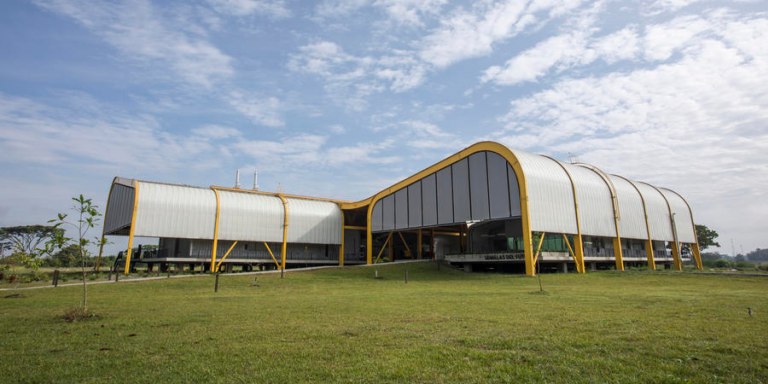
On March 15, Colombian President Iván Duque Márquez inaugurated “Future Seeds,” the world’s largest tropical crop bank based at the Alliance’s campus in Palmira, Colombia. The facility will not only preserve the biodiversity of important tropical crops, but will also be a living laboratory for some of the most advanced technologies in agricultural research, using artificial intelligence, drones and robotics.
It is estimated that the world’s population will be about 9.3 billion by 2050. To feed them, food production will have to increase by 60% but also evolve in a sustainable way, allowing farmers to cope with extreme weather events associated with climate change and reduce greenhouse gas emissions. To withstand droughts, heat, floods, and disease, crops must be resilient, which is possible through genetic diversity.
Future Seeds
Gene banks, which store seeds in cold and low humidity conditions, are becoming more and more numerous.
Future Seeds uses genomics, digital phenotyping and information technology to preserve plant biodiversity and support cutting-edge agricultural research. The facility, managed by the CGIAR Alliance of Bioversity International and the International Center for Tropical Agriculture (CIAT), also provides plant germplasm free of charge to researchers to create new varieties that can withstand the effects of rising temperatures and extreme weather. Climate change alone is expected to continue to reduce crop productivity by about 5% for each degree of warming above historical levels.
A rich collection
The Future Seeds Center replaces the original Alliance of Bioversity International and International Center for Tropical Agriculture (CIAT) gene bank in Palmira, Colombia, which has outgrown its capacity. The new state-of-the-art, sustainable facility will not only continue to house the world’s bean, cassava and tropical forage collections for conservation and distribution, but will also serve as an innovation hub to accelerate crop genetic gains. The collection includes more than 37,000 bean samples from 114 countries, 6,000 cassava samples from 28 countries and 22,600 tropical forage samples from 75 countries. Ranging from grasses to trees, forages are essential to small-scale livestock farmers around the world.
The building
The new building, which offers 30% more storage space and incorporates solar power, thermal control and rainwater harvesting, has achieved LEED (Leadership in Energy and Environmental Design) Platinum Design Certification.
The building’s design is iconic and energy efficient: it includes an exterior “skin” canopy to repel solar radiation, panels to harness solar energy, thermal control, natural ventilation and rainwater harvesting. Related infrastructure includes robotics, drones, and artificial intelligence to accelerate crop analysis to help scientists identify and incorporate traits into new varieties that can better cope with extreme conditions.
The Center’s agricultural land
Collections must be regularly updated with fresh, viable samples grown in the field. Of the 100 people employed at the Center, half work in the fields growing plants and collecting new materials.
To get new plants quickly, Furure Seeds partnered with Google’s Project Mineral, a team from X, Alphabet’s Moonshot factory, which designed a new type of rover. Dubbed “Don Roverto,” these rovers collect data autonomously. Each plant is photographed and sensors collect data about the plant and the soil in which it grows. This data is then analyzed and used by plant breeders to create more suitable crop varieties.
To date, the open source retrospective catalog of plant material has allowed scientists to identify genes that have led to the development of 550 improved bean varieties for sub-Saharan Africa, including heat-tolerant and iron-rich beans, as well as cassava. The roots, enriched with pro-vitamin A, improve diets as well as yields.
Juan Lucas Restrepo, executive director, Alliance of Bioversity International and CIAT and global director of partnerships and advocacy, CGIAR, said:
“Genebanks play a critical role in preserving plant biodiversity and equipping breeders with germplasm to adapt our food crops to climate change. The Future Seeds genebank will provide an even greater resource for researchers and breeders to find traits that could strengthen climate and shock resistant global food systems.”
The genebank uses predictive AI models to help scientists identify where significant crop biodiversity may exist, as well as cryopreservation for long-term storage of crop germplasm at temperatures of -196C°. It also includes a world-class digital knowledge bank where plant DNA sequence information can be accessed and analyzed.
There are 11 genebanks managed worldwide by the CGIAR network of agricultural research organizations, but Future Seeds is the only facility of its kind designed for education and training, with glass walls to allow visitors to see scientists at work. Marcela Santaella, Genebank Operations Manager, Alliance of Bioversity International and CIAT, concludes:
“Future Seeds is not only a repository for some of the world’s most important crops. It is also a hub of innovation that continuously trains and develops new ways to improve and protect biodiversity for better diets, resilient incomes and a healthier environment.”
Translated from Colombie : Inauguration de Future Seeds, centre d’innovation mondial pour la préservation de la biodiversité des cultures









